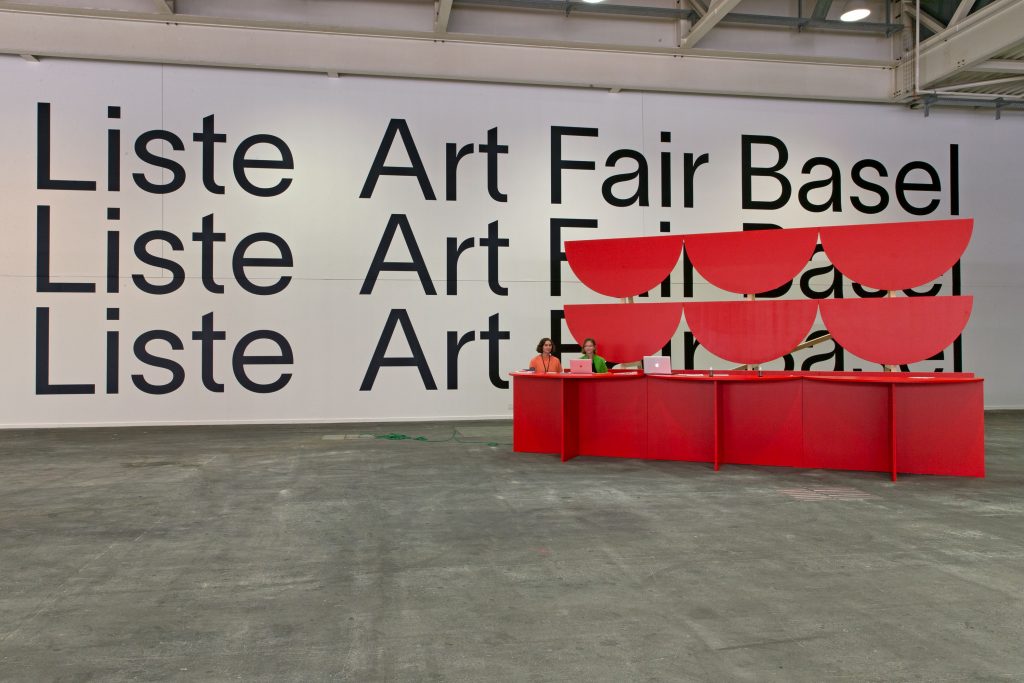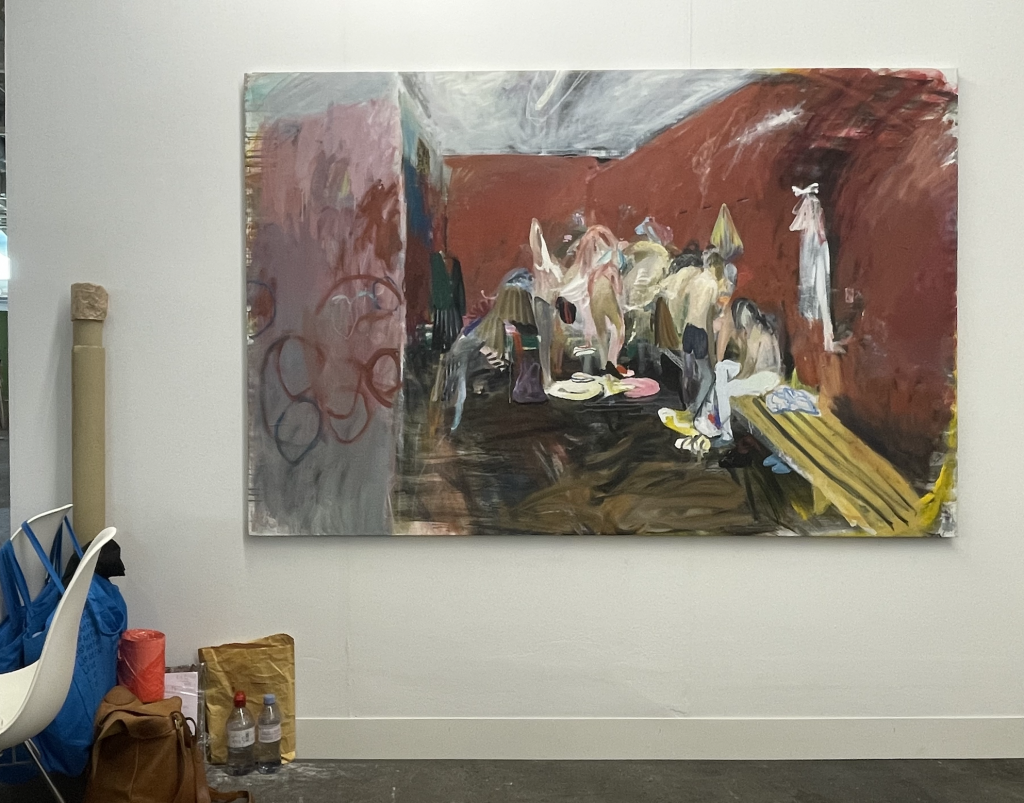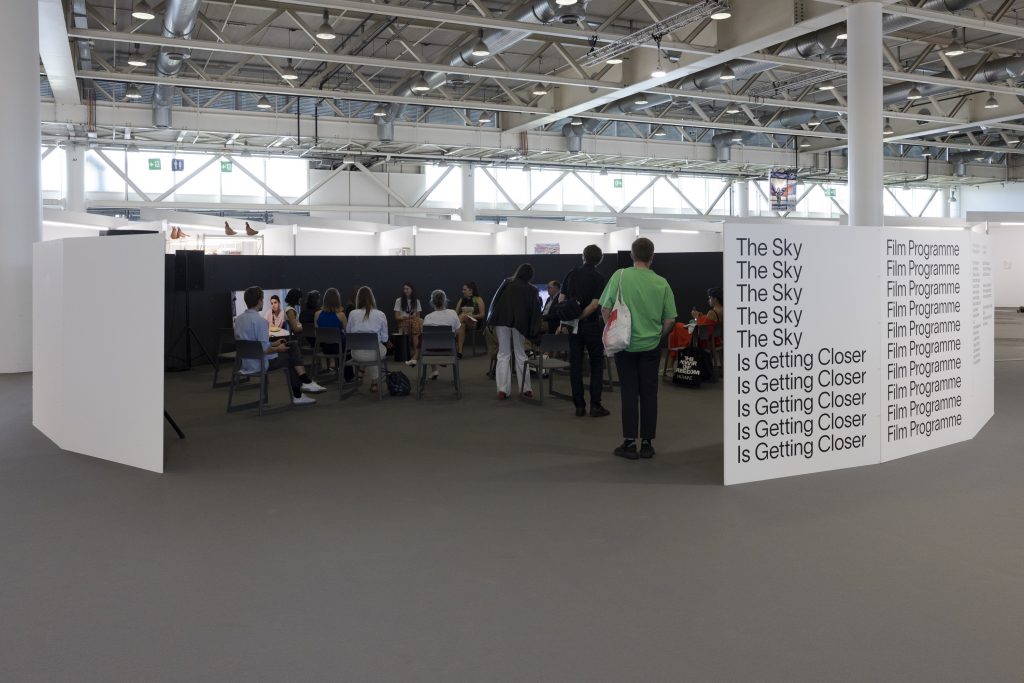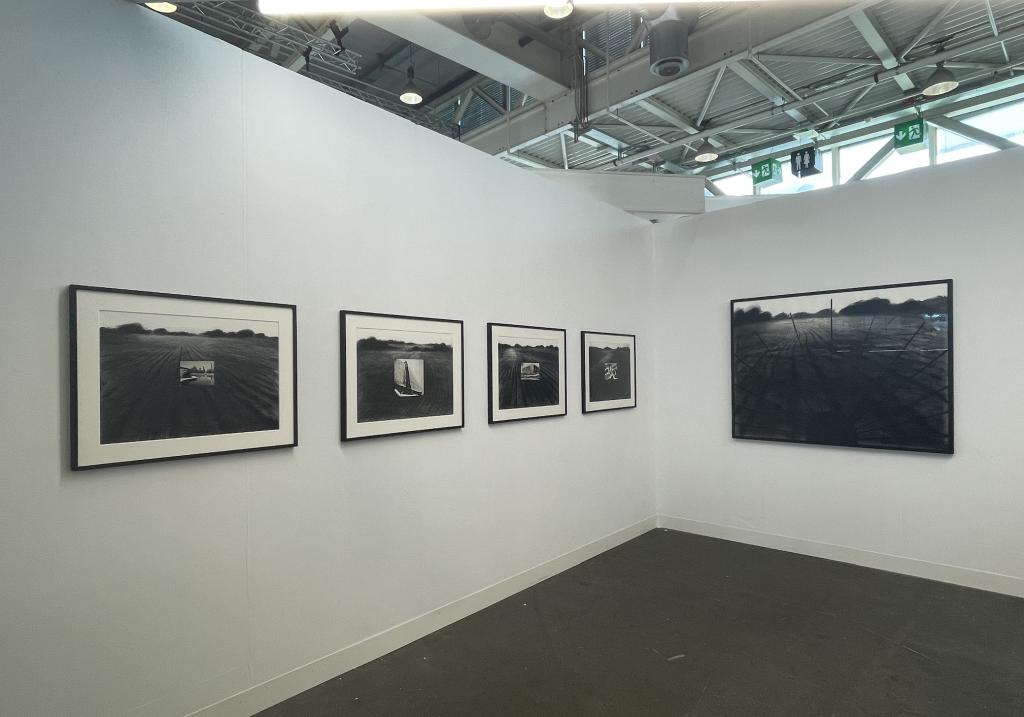Art Fairs
‘We Have Powerful Artists’: Ukrainian Galleries at Liste in Basel Bring Art That Shows a Side of the Country Beyond War
The Basel satellite fair returns to Messe Basel for a second year.

The Basel satellite fair returns to Messe Basel for a second year.

Vivienne Chow

Just 15 minutes after the doors of Liste opened on Basel’s Messeplatz on 13 June, a large, 6.5-foot-long painting by Lucy Ivanova, School Locker Room, priced at €6,000 ($6,284), was snapped up by a European woman at the booth of the Naked Room.
The work, which depicts a scene in a locker room with fluid brushstrokes, remained on the wall during the rest of the fair, so nearly two dozen more people have shown an interest in it. And now, the gallery will need to contemplate how to meet the overwhelming demand for the 1989-born, Kyiv-based artist.
“Fair-goers don’t even understand that we are from Ukraine immediately,” Marina Lanko, curator and co-owner of the Naked Room gallery, told Artnet News. “They came, saw the work, and asked questions about the artist. Some didn’t even know where Kyiv was.”

Lucy Ivanova, School Locker Room (2021), on view in Liste on the the Naked Room’s booth, sold 15 minutes after the fair opened its doors. Photo: Vivienne Chow.
The devastating war waged by Russia in Ukraine has torn the country apart, and while Lanko and her crew hoped to keep the sufferings of their home on people’s radar, it was not their only goal at Liste.
“We never wanted to be perceived as war-affected people. We wanted to show great art that is perceived by its artistic merit,” she said. “And it’s happening.”
The Naked Room, alongside Voloshyn, are the two Ukrainian galleries that were invited to participate in the Basel satellite fair, after two Russian galleries, Fragment and Osnova, withdrew from the fair in March to show solidarity with Ukraine.
But the presence of Ukrainian galleries isn’t Liste’s sole initiative to support the country. The fair, which takes place in the Messe Basel exhibition center for the second time this year, featuring 82 galleries from 37 countries, has beefed up its line-up with a film program titled “The Sky Is Getting Closer“. Conceived by curator Martha Kirszenbaum, in collaboration with Oleksandra Pogrebnyak and Daria Shevtsova from the Pinchuk Art Center in Kyiv, the schedule features 19 films by Ukrainian artists.
LC Queisser, a gallery from Georgia, has also brought the Ukrainian collective Understructure to present Oberih, a printed collection of stories from Ukrainians, with a goal to raise funds for people in the war-torn country. Galleries Sandwich and Suprainfinit from Bucharest, Romania, have also added Ukrainian artists to their presentation at the fair.

“The Sky Is Getting Closer” film program at Liste. Photo: Gina Folly. Courtesy of Liste.
The initiatives helped to put a spotlight on Ukrainian artists, “giving them visibility” with an international art crowd returning to Swizterland as travel restrictions have eased, according to Joanna Kamm, director of Liste.
During the opening on Monday alone, the number of visitors was nearly double the usual attendance. This was encouraging, Kamm noted, especially considering last year’s “difficult” edition, which saw 40 percent fewer visitors than normal.
The work by Ukrainian artists on show at the fair is also not necessarily tied to the war. The film program, for example, features works made before the conflict started. “And you can see the richness of the topics and what the artists have been dealing with,” Kamm said.
The same goes for the works featured in the Naked Room’s booth. Some of them were rescued from artists’ studios in Kyiv just as the war broke out. Lanko, a co-curator of the Ukrainian pavilion at Venice Biennale, helped to bring the artworks—enough to fill three trucks—out of the city. But the gallery is also showing sculptures, figurative paintings on canvas and paper, as well as drawings and sketches by Kateryna Lysovenko, also born in 1989, and Katya Buchatska, born in 1987.
Other works are more political. At least four paintings by Lysovenko deal with the horror and sorrow of the war.
As of Friday afternoon, the gallery had already sold 11 works as well as 10 sketches or drawings, Lanko noted. Prices ranged €500 ($524) to €6,000 ($6,284), and works have sold to buyers from the U.K., U.S., Europe, as well as Korea, Japan, and China. “Many of them are gallerists or dealers. We are quite happy with the outcome,” she said.

Installation view of works by Ukrainian artist Nikita Kadan at Voloshyn Gallery. Photo: Vivienne Chow.
The works on show at Voloshyn Gallery are even more overt. The presentation of a collection of recent works by Lesia Khomenko (b. 1980), Nikita Kadan (b. 1982), and Mykola Ridnyi (b. 1985), is an artistic deep-dive into the Russian invasion and annexation of Crimea. At least four of Kadan’s works, depicting a black plowed field representing Ukraine’s fertile soil, ranging in price from €5,000 ($5,249) to €9,000 ($9,448), were sold during the early days of the fair.
Both the Naked Room and Voloshyn will be showing at Vienna Contemporary in September. Voloshyn will also appear at the Armory Show in New York that same month.
“I have been working more or less as an ambassador for Ukraine,” Lanka said. “Our presence in Europe is very important. We believe it’s our job, our mission, to be able to present the country beyond the war. We have to represent our country, our culture, and culture is powerful. We have powerful artists.”
Liste is on view at Messe Basel, through Sunday, June 19.